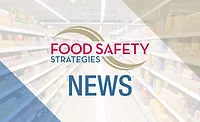Science Student Wins Favorite Poster at NACRW Meeting
 In July, eighth grader Liesl Krone won favorite poster at the North American Chemical Residue Workshop (NACRW), formerly the Florida Pesticide Residue Workshop, an annual meeting for scientists particularly interested in trace level analysis of pesticides, veterinary drug residues and other chemicals in food, animal feed and environmental samples.
In July, eighth grader Liesl Krone won favorite poster at the North American Chemical Residue Workshop (NACRW), formerly the Florida Pesticide Residue Workshop, an annual meeting for scientists particularly interested in trace level analysis of pesticides, veterinary drug residues and other chemicals in food, animal feed and environmental samples.
Her poster, entitled, “What Pesticides Have You Eaten Today?” described research she performed utilizing the QuEChERS (Quick, Easy, Cheap, Effective, Rugged and Safe) method to analyze over 100 pesticides in fruit. She was interested in applying mass spectrometric analysis (a method she had used the year before in her science fair project) to fruit because she didn’t think people knew what “went into their bodies” when they ate fruit and she wanted to find out.
Her take-home message was that people should still eat fruit but should watch how much of it they eat and to make sure to wash all fruit thoroughly before consumption.
The purpose of the NACRW is to provide training, develop and improve technical knowledge, facilitate development and distribution of new analysis methods and techniques, and establish networking to promote professional cooperation between scientists of these interests. While the majority of attendees are from North America, important international speakers are always included in the Technical Program, and attendance of scientists from Asia, Europe, South America, Australia, and Africa is increasing annually.
Looking for quick answers on food safety topics?
Try Ask FSM, our new smart AI search tool.
Ask FSM →








